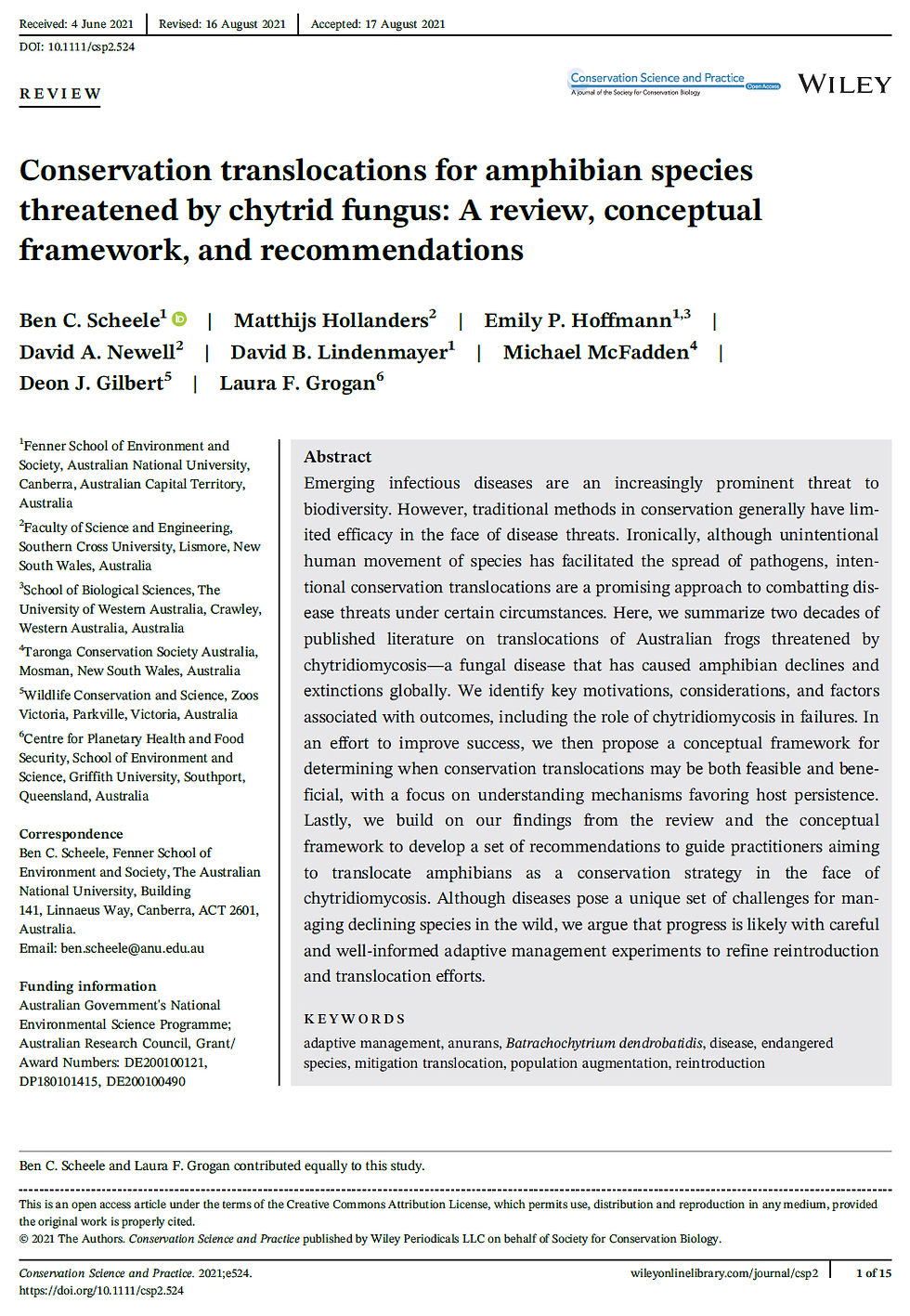New paper! Conservation translocations for amphibians threatened by chytrid fungus
- Laura
- Aug 30, 2021
- 1 min read
We have a new paper!
Scheele, B. C., Hollanders, M., Hoffmann, E., Newell, D., Lindenmayer, D., McFadden, M., Gilbert, D., Grogan, L. F. (2021) Conservation translocations for amphibian species threatened by chytrid fungus: A review, conceptual framework, and recommendations. Conservation Science and Practice. (IF 3.233). https://doi.org/10.1111/csp2.524
ABSTRACT
Emerging infectious diseases are an increasingly prominent threat to biodiversity. However, traditional methods in conservation generally have limited efficacy in the face of disease threats. Ironically, although unintentional human movement of species has facilitated the spread of pathogens, intentional conservation translocations are a promising approach to combatting disease threats under certain circumstances. Here, we summarize two decades of published literature on translocations of Australian frogs threatened by chytridiomycosis—a fungal disease that has caused amphibian declines and extinctions globally. We identify key motivations, considerations, and factors associated with outcomes, including the role of chytridiomycosis in failures. In an effort to improve success, we then propose a conceptual framework for determining when conservation translocations may be both feasible and beneficial, with a focus on understanding mechanisms favoring host persistence. Lastly, we build on our findings from the review and the conceptual framework to develop a set of recommendations to guide practitioners aiming to translocate amphibians as a conservation strategy in the face of chytridiomycosis. Although diseases pose a unique set of challenges for managing declining species in the wild, we argue that progress is likely with careful and well-informed adaptive management experiments to refine reintroduction and translocation efforts.

Comments